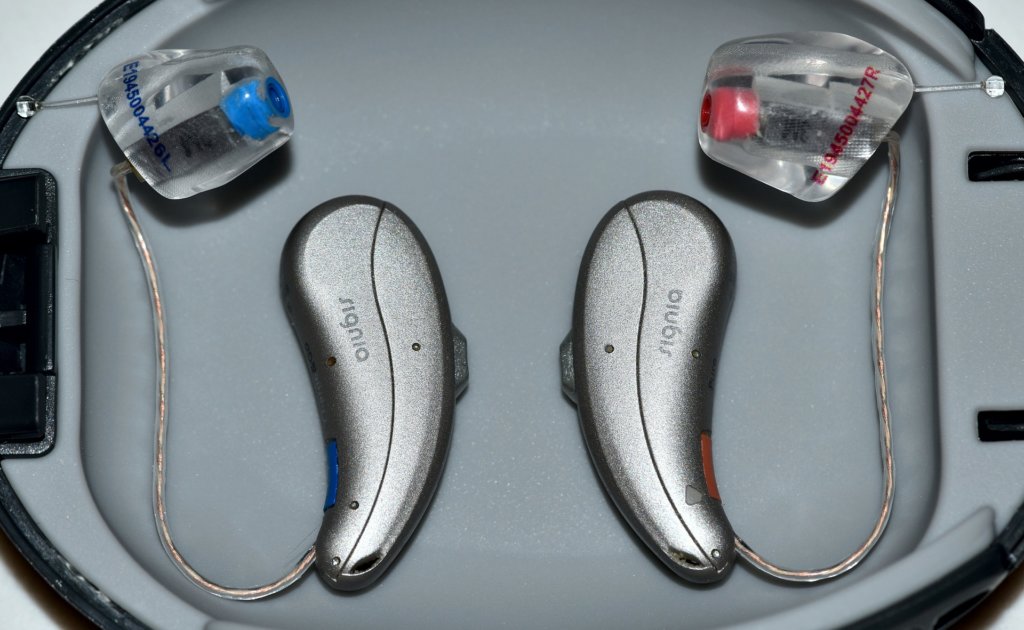Collaborating for Effective HAT Choices
A few months ago, in The Incredible Shrinking FM Receiver, I discussed the many changes in Hearing Assistance Technology (HAT), which offer new options for students with hearing loss, but have also created some challenges for educational audiologists and teachers of the deaf and hard of hearing. We all have an increased appreciation of HAT's need with the COVID-19 pandemic when even people with typical hearing are struggling with communication due to masks and distancing. In education, with the expansion of online learning due to the COVID-19 pandemic, we are learning new ways of using technology to provide access and stretching our creativity to support students in hybrid or blended models, and so, making effective choices for HAT is even more crucial. This decision-making process is smoothest when both educational audiologists and clinical audiologists can share the necessary technical information.
Information to be Shared with Educational Audiologists by Clinical Audiologists
Educational audiologists do our best to keep current with hearing aid, cochlear implant, and bone-anchored hearing device technologies, but many of us do not fit these technologies ourselves in clinical settings, so we do not have the advantage of the first-hand experience with them. For example, when a manufacturer announces a new hearing aid, our first question is generally "what are the options for integration with an FM system?," not questions about programming or signal processing strategies. For many years, when hearing aids typically came with telecoils and direct audio input capability, we chose to use universal receivers with audio shoes, integrated receivers, or body-worn receivers via telecoil. If a student came to school with new hearing aids that were not compatible with their current FM system (for example, if the hearing aids used a different integrated receiver than the old hearing aids), we could usually make something work until we could upgrade the FM system. The newest hearing aid technologies offer FM system receivers within the hearing aid, eliminating an external component's need. However, these new hearing aids may necessitate the purchase of most, if not all, of a new FM system – not always possible and usually not a quick process. Sharing knowledge helps us provide accurate information to parents and students and manage expectations and avoid disappointment. What information is helpful for clinical audiologists to share with educational audiologists to ensure seamless access for the student?

- Hearing aid make and model. It may seem redundant to report the student's make and model of hearing aid on an audiogram, but it is beneficial for an educational audiologist who has received a fuzzy faxed audiogram with no report for a student whom he/she has not yet seen. It happens surprisingly often to me that I ask a classroom teacher to take a picture of a student's hearing aids with their phone so that I can figure out the make and model of hearing aid, as a quicker alternative to driving out to the school to see for myself, or playing phone tag with a clinical audiologist to track down the information. Knowing the exact make and model of hearing aid is also important to research options for FM system compatibility — does the hearing aid have a telecoil? Is there an option for an integrated receiver? If not, is there an option to use an audio shoe? Is the device only compatible with a particular remote microphone? This latter scenario is fortunately not extremely common. Still, it does happen that a student comes to school with new hearing aids that are only compatible with that manufacturer's remote microphone (which was not developed for educational use by a company with whom the purchasing department does not currently have an account).
- An indication of when the hearing aids were purchased or fit (i.e., how old the hearing aids are), and an indication of consideration of new hearing aids (if that discussion happened with parents). As technology changes, it is increasingly common that older technologies are discontinued, leaving a student with limited options if they have older hearing aids. For example, a student who has an older hearing aid that is still working, and which parents are not financially able to replace may not have the option for a matching integrated receiver if the receiver has been discontinued.
Knowing the age of the hearing aids and whether replacement is being discussed, is also helpful for planning. For example, if a new student arrives who requires an FM system, but we know that parents are considering purchasing new aids in a few months, we would likely find a viable option with a loaner FM system rather than buying a new system which may be incompatible in a few months. If we know that we will need to work with older hearing aids for the foreseeable future, that helps with planning. - A description of what assistive technology is being used at home. Increasingly (and happily), parents and students are provided with options for using a streamer or other technology for hearing the television better, pair with a game console, use a cellphone, etc. Since FM systems represent another technology that must be connected to the hearing aids, it is useful for educational audiologists to know if the hearing aids (for example) are already paired with a home device. Assistive technologies such as remote microphones that are marketed for home use by consumers are not always the same as similar systems used at school.
Information to Be Shared with Clinical Audiologists By Educational Audiologists
Sharing information about what is happening at school with clinical audiologists is also essential to help with decision making and counselling, and so that everyone clearly understands the rationale for the choices that were made. Educational audiologists are happy to provide this information, but this communication sometimes requires more attention, since usually, there is no formal structure via a written report from school to the clinic, as there is from clinic to school.
- Make and model of FM system being used at school. Parents (and often students) do not know the FM system's specifics at school and sometimes provide inaccurate information, leading to misunderstandings. For example, sometimes students benefit from access to a sound field system that was actually purchased for another student. It does happen that a student may have access to the sound field system for a few years because the two students remained in the same classroom. However, classroom assignments may change at some point, and if the system is then no longer in place in September, parents may mistakenly report that it was "taken away." However, what is likely happening is that the students' needs are currently being evaluated due to this change in educational placement so that we can provide the student with their own system.
- The rationale for this choice and an indication of what information informed this choice. Sometimes, FM system choice is clear – for example, for a student with a bilateral hearing loss with BTE hearing aids, the most common choice is likely a personal FM system with integrated receivers. However, sometimes the choice is less clear – for example, a student with unilateral hearing loss who has a hearing aid on only one ear, used very inconsistently. Sometimes a sound field system makes more sense for a particular student in a specific classroom, because ease of use and the existence of an audible pass around microphone result in better access for the student. Educational audiologists sometimes make what appear to be unconventional choices, but we’re happy to explain our rationale, and what information we gathered to inform this choice. For example, for a student who has relatively little difficulty hearing the teacher but struggles significantly with hearing peers, our focus might be on systems that provide the most versatile and easy to use pass around microphone, because access to peers is where the biggest gaps lie.
Classrooms are dynamic listening environments, due to the acoustics of the room but also due to curriculum demands and the characteristics of the teachers and students who call them home, and we need to continually evaluate whether we have appropriately matched the needs of the student with the recommended technology (and pivot when necessary). Collaboration among all of the individuals in a student’s life who contribute to their well-being allows us to set them up for success.


